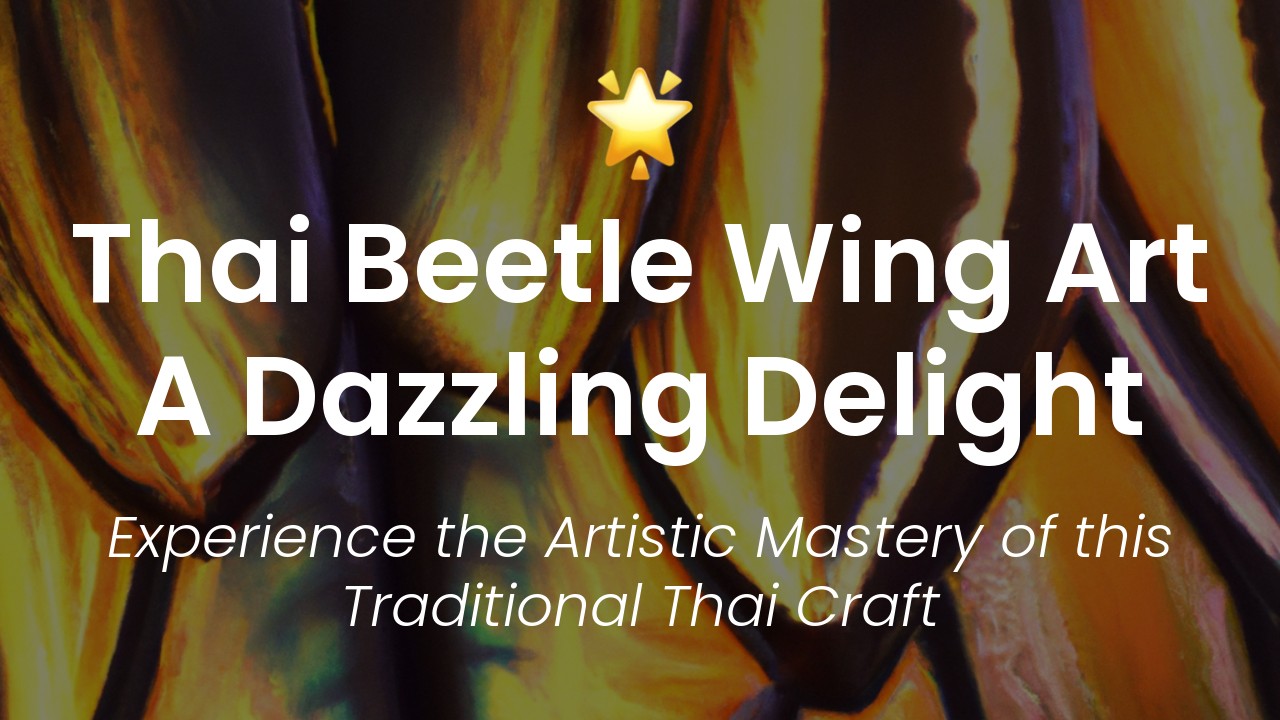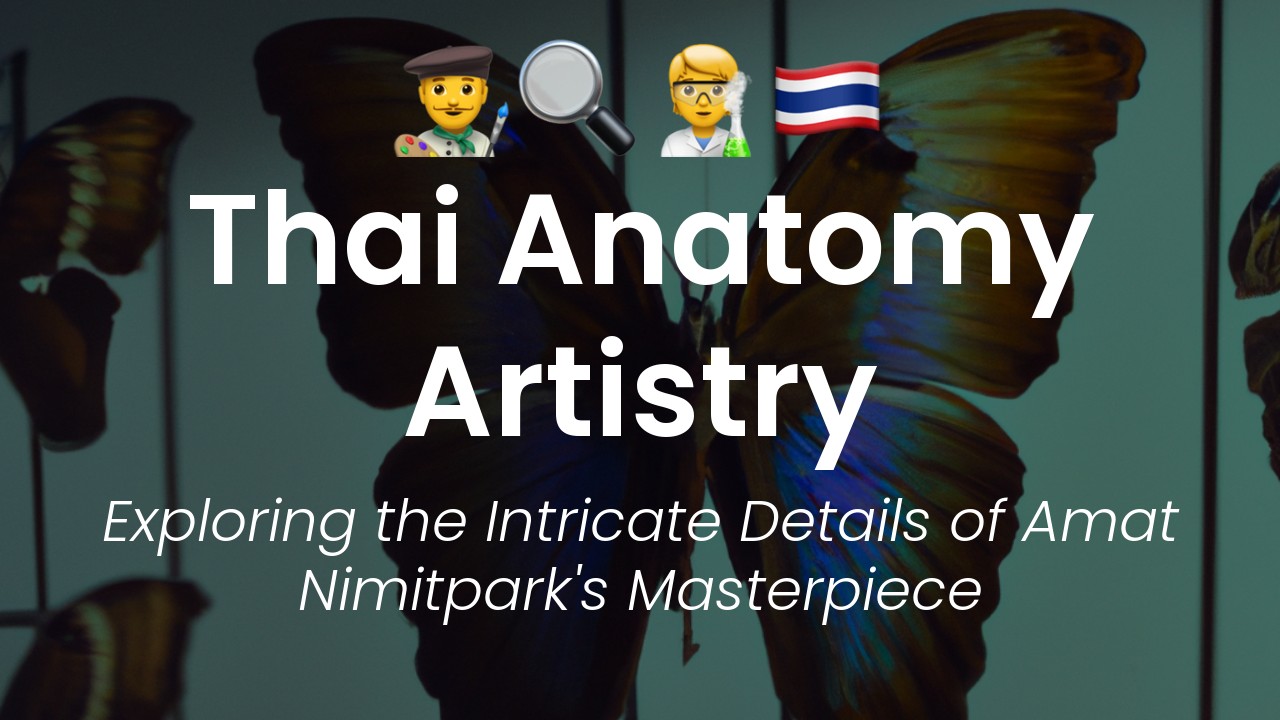As a proud Thai citizen, I have always been fascinated by the unique and intricate art forms that thrive in my country. One such art form is Nielloware, a stunning decorative technique that originated in Ayutthaya, an ancient Thai kingdom situated near Bangkok.
Nielloware is a craft that involves the use of a special alloy of silver, copper, lead, and sulfur, which is then engraved and inlaid with intricate designs. The result is a stunning contrast of silver, black, and sometimes gold, that creates striking and complex shapes.
Nielloware was originally used to adorn temples and royal palaces, but it soon found its way into everyday objects such as boxes, plates, bowls, and jewelry. The art form flourished during the Ayutthaya period (1351 – 1767) and is still revered in present-day Thailand.
If you're a lover of art and culture, Nielloware is definitely something you'll want to experience during your trip to Thailand. To help you discover the beauty of Nielloware, in this article, I'll give you a brief introduction to the history of Nielloware, its significance in Thai culture, and the best places to find it in Thailand. So, get ready for a journey into the intricacies of one of Thailand's most revered art forms.
History of Nielloware Art in Thailand
Nielloware Art has a rich history in Thailand that dates back several centuries. This exquisite art form originated in the ancient kingdom of Sukhothai, which was the birthplace of Thai art and culture. Back then, niello was primarily used as a type of black ink that was used to fill in engraved designs on gold, silver, and bronze objects.
The art of nielloware truly came into its own during the Ayutthaya period, between the 14th and 18th centuries. During this time, Thai artisans began using niello to create intricate designs on silverware, jewelry, and other objects. This craft continued to evolve during the reigns of King Rama III and King Rama IV, who lent their support to this exquisite craft.
Today, Nielloware Art is highly sought after by collectors and art enthusiasts all over the world. In Thailand, it is still recognized as one of the most important cultural resources of the country.
Techniques used in Nielloware Art
Nielloware Art is created through a highly specialized technique that involves filling engraved designs in precious metals with a special paste that contains sulfur, copper, lead, and silver. The object is then heated until the metal is evenly blackened. The excess niello is removed, revealing intricate designs that are both elegant and strikingly beautiful.
The process of creating Nielloware Art requires a high level of skill and precision. Artisans must not only be highly skilled in the art of engraving, but also in the application and fusion of niello. They must also have an eye for design and aesthetics, as every piece they create is a work of art with intricate patterns and designs.
Characteristics of Nielloware Art
One of the most striking features of Nielloware Art is its use of intricate patterns and designs. These designs often take inspiration from nature, with leaves, flowers, and animals featuring prominently in many pieces. Thai culture is also a big influence, with many designs incorporating traditional Thai motifs and symbols.
Nielloware Art is also known for its durability, with many pieces lasting for centuries without any major signs of wear and tear. This makes it a highly prized and valuable art form, both in terms of its aesthetic and historical significance.
Symbolism and meaning behind Niello designs
Many of the designs found in Nielloware Art are steeped in symbolism and meaning. For example, flowers and leaves are often used to symbolize growth and vitality, while animals like elephants and tigers are seen as symbols of strength and power.
Some designs are linked to Thai mythology and folklore, with characters like the Garuda and the Naga featuring prominently in many pieces. These mythological creatures are seen as protectors and guardians of the Thai people, and their presence in Niello designs is seen as a sign of good luck and auspiciousness.
Places to find Nielloware Art in Thailand
If you're interested in seeing Nielloware Art up close, there are many places in Thailand where you can do so. Many museums and galleries, such as the National Museum Bangkok and the Jim Thompson House, feature examples of Nielloware Art as part of their collections.
There are also many markets and shops in Bangkok where you can find Nielloware Art for sale. Chatuchak Market, for example, is known for its vast selection of antiques and crafts, including unique pieces of Nielloware Art.
In addition to Bangkok, there are also many other cities and towns in Thailand where you can find Nielloware Art. Chiang Mai, for example, is home to many skilled artisans who continue to practice this craft in traditional ways.
Buying and collecting Nielloware Art
If you're interested in buying or collecting Nielloware Art, there are several things to consider. First and foremost, it’s important to educate yourself about the craft so that you can appreciate the skill and artistry that goes into creating each piece.
You should also take the time to research the artist or the shop you're buying from to ensure that the piece you're purchasing is authentic and of high quality. Many reputable shops and galleries will be able to provide you with detailed information about individual pieces, including the name of the artist and the materials used.
Finally, it's important to care for your Nielloware Art properly. This may involve storing it in a special box or case to prevent it from getting scratched or damaged, as well as cleaning it regularly with a soft cloth.




